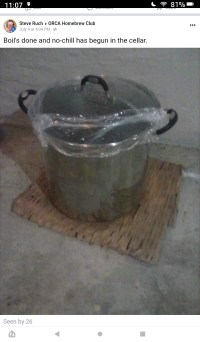CyberFox
Well-Known Member
- Joined
- Mar 29, 2022
- Messages
- 201
- Reaction score
- 82
Has anyone had experience doing the no chill technique by leaving the wort in the kettle to cool overnight? I know that the typical way to no chill is to transfer to an HDPE container, but I've also heard that some just put Saran wrap over the kettle opening and put the lid on. My main concern would be an increased risk of infection, but maybe there's not much to worry about due to the boil beforehand. Please let me know what your experience has been. Thanks in advance!



